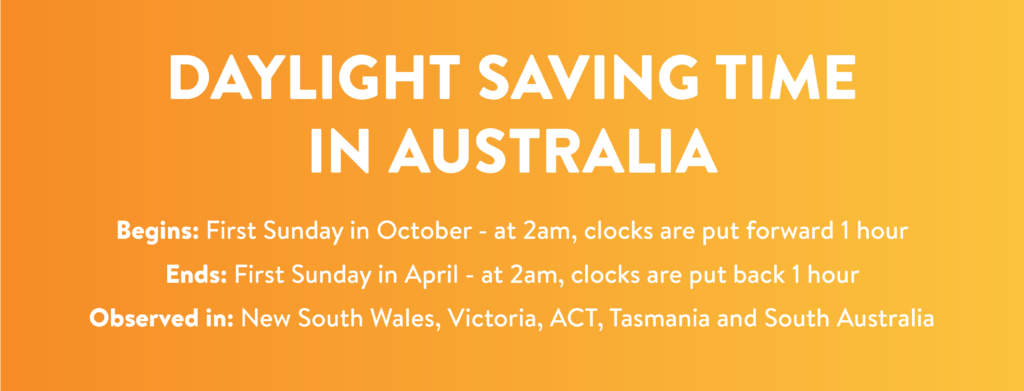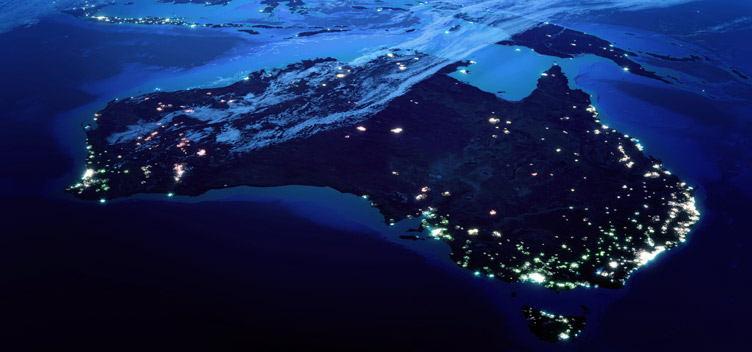In 2024, 7 April marks the end of ‘Daylight Saving Time’ (DST) in Australia. However, if you’re not familiar with the concept, you might be wondering: “What is daylight savings?”
If this is your first time living in a country that has daylight savings or you’re interested in learning more about how daylight savings works, let’s cover what this changing of the clocks means, why we do it, and when daylight saving time starts and ends in Australia.
What is daylight savings?
Daylight Saving Time (DST) is when clocks are set forward one hour from ST, in order to make better use of natural daylight. In Australia, DST moves clocks forward one hour in the summer, and back one hour when returning to Standard Time (ST) in autumn. This doesn’t add daylight but instead provides us with more usable hours of daylight. It prevents us from wasting too many hours with natural sun, and from working when it’s dark.
In other words, changing the clocks gives everyone an extra hour of sunlight to make use of in the evening, rather than having everyone sleep through that sunny hour in the mornings.
Which time zones in Australia have daylight savings?
As the world’s sixth-largest country, Australia is divided into three separate time zones:
- Australian Eastern Standard Time (AEST), covering Queensland, New South Wales, Victoria, Tasmania and the Australian Capital Territory.
- Australian Central Standard Time (ACST), covering South Australia, the Northern Territory and the town of Broken Hill in western New South Wales.
- Australian Western Standard Time (AWST), covering Western Australia.
Australia first observed DST in 1916, with Tasmania introducing the practice.
In the Australian summer, New South Wales, Victoria, South Australia, Tasmania and the Australian Capital Territory will turn their clocks forward one hour to imitate DST. Their timezones will then have ‘DT’ at the end, for example, ‘AEDT’ or ‘ACDT’.
Northern and western parts of Australia, including Queensland, the Northern Territory and Western Australia do not use DST. These states and territories usually have sunlight until 8pm and don’t really need the extra hour of sunlight. There is also some resistance to the introduction of daylight savings in certain states, with the debate spanning many years. You can learn more about the history of daylight savings and its controversy here.
When does daylight savings start in 2024?
In 2024, DST starts on 6 October in Australia. DST always starts on the first Sunday of October.
DST will continue until it ends on the first Sunday of April in 2025, which will be 6 April.
The pros and cons of daylight savings
Although modern DST has been in use for just over 100 years, ancient civilisations are known to have engaged in equivalent practices. Roman water clocks used different scales for different months, in order to adjust daily schedules.
Today, DST is used by approximately 40 per cent of countries in the world, affecting more than one billion people in places such as Canada, the United States of America and countries within the European Union. People in favour of daylight savings say that it reduces road accidents, saves on household energy use (as it reduces the amount of energy needed for artificial lighting in the evening) and gives people more time to be out and active in the summer evenings.
However, there is a continuous debate around these perceived benefits of using DST. Changing the clock, even if it is only by one hour, disrupts our body clocks. Critics say that this can trigger health issues, such as increased strokes, heart attacks and sleep deprivation in teenagers.
Do I have to change my clocks myself?
On the night that the clocks change, most mobile phones and computers will automatically change the time for you. However, you should still check the settings to make sure your device knows what to do.
If you rely on an alarm clock without an internet connection, make sure you change the time before you go to bed.





